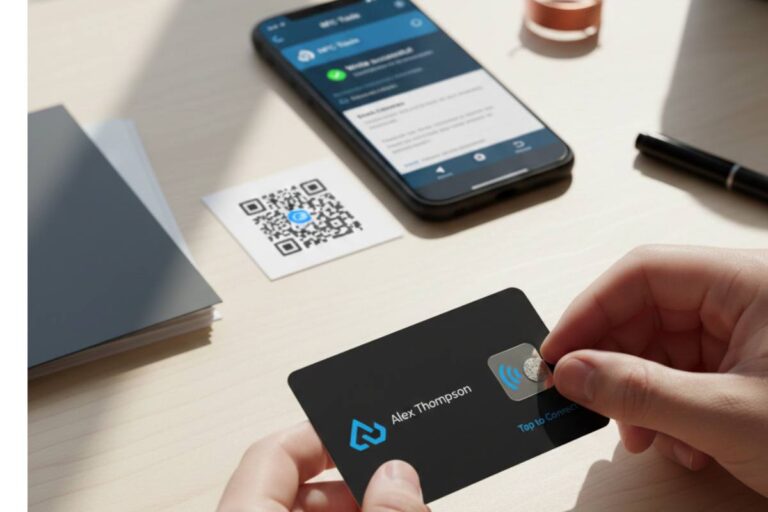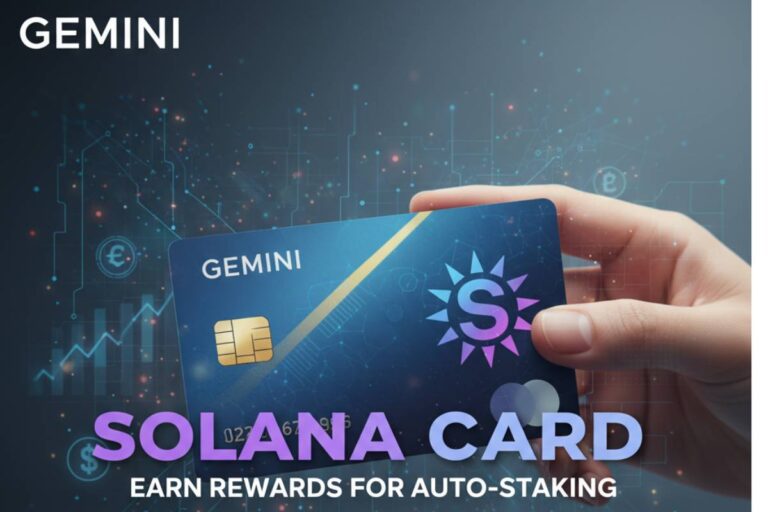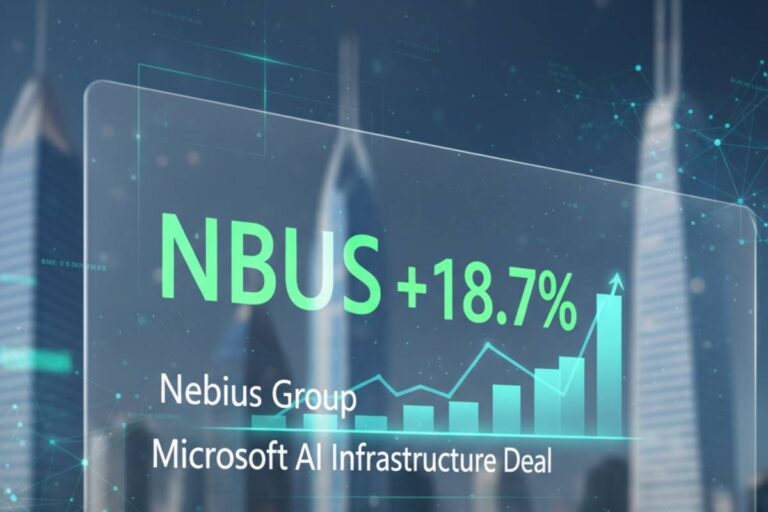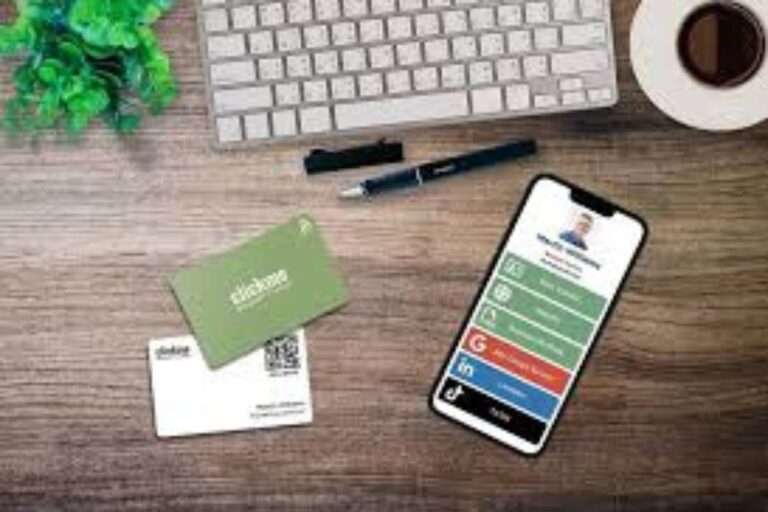The simple business card is getting a digital upgrade. Near Field Communication (NFC) technology is changing the way professionals share contact information. It’s a sleek, eco-friendly, and very effective alternative to traditional paper cards.
So what is it about these smart cards that makes them so interesting? First of all, they’re fixing problems we didn’t even know we had with traditional networking methods.
Getting to Know NFC Technology in Business Cards
A small chip in NFC business cards stores your contact information digitally. When someone taps their phone against your card, it sends all of your information to their phone right away. No typing, scanning, or messing around with apps.
You may have used the technology before for contactless payments. But how does it work for networking in a professional setting? That’s when things start to get interesting.
NFC works with almost all modern smartphones, unlike QR codes, which need camera access and certain apps. When you’re trying to make a lasting impression at a crowded conference, that simple tap-and-go experience is what really matters.
Benefits for the Environment: Going Green Has Never Been So Smart
You might be surprised to learn that the average professional goes through about 1,000 business cards every year. When you multiply that by millions of professionals around the world, you get a big effect on the environment.
Traditional paper cards need:
- Trees
- Water
- Chemicals to print
- Energy to make and move
Most of them end up in landfills within a few weeks of being given out. You wouldn’t really call it sustainable.
NFC cards change this equation completely. A digital card can last for years, maybe even decades, without needing to be replaced. You don’t have to reprint when you change jobs, you don’t have to throw away old phone numbers, and you don’t have to feel bad about helping to cut down trees.
The difference in carbon footprints is very clear. Even though one NFC card might cost more at first, the environmental cost per use goes down over time. It’s easy to see how companies that support sustainability initiatives should act in line with their values.
Instant Updates: Never Give Out Old Information Again
It’s a terrible feeling to realize you’ve been giving out cards with your old email address. Or worse, when someone says they couldn’t get in touch with you because your phone number changed six months ago?
As soon as anything changes, traditional cards become useless. You have a stack of expensive paper that is mostly useless unless you like having awkward conversations about old contact information.
This problem goes away completely with NFC technology. Once you update your information in the linked app or platform, all of the cards you’ve ever given out will show the new information right away.
Changes are instant:
- Changed jobs? Revised
- Do you have a new phone number? That’s it
- Added a profile on LinkedIn? It’s already there
This is more than just convenient; it’s also professional. Think about how someone will feel when they get in touch with you months after you met, and all of your information is still correct. It shows that you pay attention to details and plan.
How to Make a Good First Impression in the Digital Age
It can be hard to remember what happened at networking events because of all the handshakes and forced conversations. To stand out, you need something special that will make people remember you long after the event is over.
NFC cards make what marketing experts call a “pattern interrupt.” People notice when you pull out a sleek, tech-enabled card instead of a regular paper one. They want to know. They want to know how it works.
“Wow, that’s cool – how does it work?” is a great way to start a conversation. Instead of the usual “give and forget” interaction, you’ve made a moment that shows how creative and tech-savvy you are.
The design of the building is also important. Minimalist design is common in NFC cards, with clean lines, high-quality materials, and polished finishes. They feel heavy in a way that makes you think of quality and attention to detail.
Better Networking Features and Capabilities
NFC cards are more than just digital versions of paper cards; this is where they really shine. They are places to connect with others.
A lot of NFC solutions let you share more than one way to contact you at once. Your card could have:
- Direct contact information, like phone and email
- Profiles on social media sites like LinkedIn, Twitter, and Instagram
- Links to the company’s website and portfolio
- Links to the calendar booking to make it easy to set up meetings
- Video introductions or overviews of the company
Some high-tech cards can even keep track of engagement. You can see when someone looks at your information, which links they click, and how often they come back to your profile. It’s like having analytics for the things you do to network.
There are no limits to what can be integrated. Link your card to your CRM system so that new contacts are added automatically. Set up emails that will automatically follow up. Make separate profiles for different kinds of events or groups of people.
Cost Analysis: Investing in the Short Term and Saving in the Long Term
Let’s talk about the numbers, because the financial case for NFC cards is stronger than most people think.
Depending on the quality and design, a set of 500 regular business cards usually costs between $20 and $100. When information changes, there are costs for reprinting, rush orders for conferences, and shipping fees. All of these costs add up quickly.
At first, NFC cards cost between $15 and $50 each. That seems like a lot of money, but if you usually go through 1,000 traditional cards a year, you’re spending $40 to $200 a year just on reprints.
One NFC card can replace thousands of regular cards over the course of its life. When you add up the money saved on printing, shipping, and time spent managing inventory, most professionals can see the ROI within the first year.
The economics are even better for businesses that buy in bulk. Many providers give big discounts on orders of 50 to 100 cards or more, which lowers the cost per unit by a lot.
Positioning Your Brand and Professional Image
Whether you know it or not, your business card shows off your brand. In industries that value new ideas, traditional cards can look old-fashioned.
NFC cards show that you are tech-savvy and ahead of the curve. They tell you to be open to new ideas and not be afraid to try new things. In competitive fields, this idea can make the difference between being remembered and being forgotten.
The options for customization help keep the brand consistent. A lot of NFC providers offer white-label solutions. This lets businesses keep their brand identity while using the latest technology.
NFC cards can help level the playing field for entrepreneurs and freelancers. They give the impression of being sophisticated and successful, which might take a lot of money to market otherwise.
Things to Think About for Security and Privacy
It’s normal to worry about data security when using any digital solution. The good news is that in many ways, NFC cards are safer than regular paper cards.
Anyone can copy, scan, or write down information from paper cards. Once you give someone one, you can’t control how they share or store that information.
Encrypted data transmission is common in NFC cards. Many platforms let you:
- Set expiration dates for shared information
- Control who can see it
- Take away access completely if you need to
Privacy controls let you choose how much information you share with each contact. Your full contact information for potential clients, just your LinkedIn for casual acquaintances, or all the information about your company for investors.
Some people might be worried about the tracking features, but they actually make things safer by letting you see exactly who has accessed your information and when.
How Businesses Can Put These Ideas into Action
It takes planning to roll out NFC business cards across a company, but the process is easier than most companies think.
Start with the sales and leadership teams. These are the people who do the most networking and speak for the company in public. Their feedback helps improve the method before it is used more widely.
There isn’t much training, but it’s important. Employees need to know how to use the cards well and be able to explain the technology to people who might not be familiar with it.
Integrating with your current CRM and marketing systems gets you the most value. When new contacts automatically go into your sales pipeline or marketing database, the gains in efficiency add up quickly.
Think about making different types of cards for different jobs or uses. Sales teams may need to share a lot of contacts, but executives may want to share information more selectively.
Getting Past Common Adoption Problems
Some professionals are still hesitant to switch, even though it is clear that it would be better. People often worry about the cost, whether the technology will work with their devices, and whether it will be too hard to use.
People often make too big a deal out of technology fear. If someone can use NFC business cards, they can also use contactless payments or share photos between phones. There isn’t much of a learning curve.
When you look at things through the lens of the total cost of ownership instead of the upfront investment, worries about cost go down. For a fair comparison, figure out how much you spend each year on traditional cards, including reprints and shipping.
Problems with compatibility are becoming less common. Most smartphones made after 2015 can use NFC technology. Many NFC cards have QR codes on them as backup options for the small number of contacts who don’t have devices that work with them.
Trends and Changes in Technology in the Future
The technology behind NFC business cards is changing quickly. Emerging features include:
- Card interactions that start augmented reality experiences
- Works with voice assistants so you can share contacts hands-free
- Security features that use biometrics to protect access to sensitive information
- The ability to integrate advanced analytics and CRM
- Environmental sensors for location-based information sharing
The rate at which people are using the technology suggests that we are getting close to a tipping point. As more people use NFC cards and see how useful they are, regular paper cards may start to seem as old-fashioned as fax machines.
Integration with emerging technologies like blockchain could add verification and authentication features, making business cards more trustworthy and secure than ever before.
Are you ready to update the way you network with NFC business cards? The technology has great benefits for professionals who want to make a lasting impression while also being good for the environment. Would you rather get help picking specific NFC card providers or help making a plan for how your company will use NFC cards?
Why NFC Business Cards Are Changing the Way Professionals Network
The simple business card is getting a digital upgrade. Near Field Communication (NFC) technology is changing the way professionals share contact information. It’s a sleek, eco-friendly, and very effective alternative to traditional paper cards.
So what is it about these smart cards that makes them so interesting? First of all, they’re fixing problems we didn’t even know we had with traditional networking methods.
Getting to Know NFC Technology in Business Cards
A small chip in NFC business cards stores your contact information digitally. When someone taps their phone against your card, it sends all of your information to their phone right away. No typing, scanning, or messing around with apps.
You may have used the technology before for contactless payments. But how does it work for networking in a professional setting? That’s when things start to get interesting.
NFC works with almost all modern smartphones, unlike QR codes, which need camera access and certain apps. When you’re trying to make a lasting impression at a crowded conference, that simple tap-and-go experience is what really matters.
Benefits for the Environment: Going Green Has Never Been So Smart
You might be surprised to learn that the average professional goes through about 1,000 business cards every year. When you multiply that by millions of professionals around the world, you get a big effect on the environment.
Traditional paper cards need:
- Trees
- Water
- Chemicals to print
- Energy to make and move
Most of them end up in landfills within a few weeks of being given out. You wouldn’t really call it sustainable.
NFC cards change this equation completely. A digital card can last for years, maybe even decades, without needing to be replaced. You don’t have to reprint when you change jobs, you don’t have to throw away old phone numbers, and you don’t have to feel bad about helping to cut down trees.
The difference in carbon footprints is very clear. Even though one NFC card might cost more at first, the environmental cost per use goes down over time. It’s easy to see how companies that support sustainability initiatives should act in line with their values.
Instant Updates: Never Give Out Old Information Again
It’s a terrible feeling to realize you’ve been giving out cards with your old email address. Or worse, when someone says they couldn’t get in touch with you because your phone number changed six months ago?
As soon as anything changes, traditional cards become useless. You have a stack of expensive paper that is mostly useless unless you like having awkward conversations about old contact information.
This problem goes away completely with NFC technology. Once you update your information in the linked app or platform, all of the cards you’ve ever given out will show the new information right away.
Changes are instant:
- Changed jobs? Revised
- Do you have a new phone number? That’s it
- Added a profile on LinkedIn? It’s already there
This is more than just convenient; it’s also professional. Think about how someone will feel when they get in touch with you months after you met, and all of your information is still correct. It shows that you pay attention to details and plan.
How to Make a Good First Impression in the Digital Age
It can be hard to remember what happened at networking events because of all the handshakes and forced conversations. To stand out, you need something special that will make people remember you long after the event is over.
NFC cards make what marketing experts call a “pattern interrupt.” People notice when you pull out a sleek, tech-enabled card instead of a regular paper one. They want to know. They want to know how it works.
“Wow, that’s cool – how does it work?” is a great way to start a conversation. Instead of the usual “give and forget” interaction, you’ve made a moment that shows how creative and tech-savvy you are.
The design of the building is also important. Minimalist design is common in NFC cards, with clean lines, high-quality materials, and polished finishes. They feel heavy in a way that makes you think of quality and attention to detail.
Better Networking Features and Capabilities
NFC cards are more than just digital versions of paper cards; this is where they really shine. They are places to connect with others.
A lot of NFC solutions let you share more than one way to contact you at once. Your card could have:
- Direct contact information, like phone and email
- Profiles on social media sites like LinkedIn, Twitter, and Instagram
- Links to the company’s website and portfolio
- Links to the calendar booking to make it easy to set up meetings
- Video introductions or overviews of the company
Some high-tech cards can even keep track of engagement. You can see when someone looks at your information, which links they click, and how often they come back to your profile. It’s like having analytics for the things you do to network.
There are no limits to what can be integrated. Link your card to your CRM system so that new contacts are added automatically. Set up emails that will automatically follow up. Make separate profiles for different kinds of events or groups of people.
Cost Analysis: Investing in the Short Term and Saving in the Long Term
Let’s talk about the numbers, because the financial case for NFC cards is stronger than most people think.
Depending on the quality and design, a set of 500 regular business cards usually costs between $20 and $100. When information changes, there are costs for reprinting, rush orders for conferences, and shipping fees. All of these costs add up quickly.
At first, NFC cards cost between $15 and $50 each. That seems like a lot of money, but if you usually go through 1,000 traditional cards a year, you’re spending $40 to $200 a year just on reprints.
One NFC card can replace thousands of regular cards over the course of its life. When you add up the money saved on printing, shipping, and time spent managing inventory, most professionals can see the ROI within the first year.
The economics are even better for businesses that buy in bulk. Many providers give big discounts on orders of 50 to 100 cards or more, which lowers the cost per unit by a lot.
Positioning Your Brand and Professional Image
Whether you know it or not, your business card shows off your brand. In industries that value new ideas, traditional cards can look old-fashioned.
NFC cards show that you are tech-savvy and ahead of the curve. They tell you to be open to new ideas and not be afraid to try new things. In competitive fields, this idea can make the difference between being remembered and being forgotten.
The options for customization help keep the brand consistent. A lot of NFC providers offer white-label solutions. This lets businesses keep their brand identity while using the latest technology.
NFC cards can help level the playing field for entrepreneurs and freelancers. They give the impression of being sophisticated and successful, which might take a lot of money to market otherwise.
Things to Think About for Security and Privacy
It’s normal to worry about data security when using any digital solution. The good news is that in many ways, NFC cards are safer than regular paper cards.
Anyone can copy, scan, or write down information from paper cards. Once you give someone one, you can’t control how they share or store that information.
Encrypted data transmission is common in NFC cards. Many platforms let you:
- Set expiration dates for shared information
- Control who can see it
- Take away access completely if you need to
Privacy controls let you choose how much information you share with each contact. Your full contact information for potential clients, just your LinkedIn for casual acquaintances, or all the information about your company for investors.
Some people might be worried about the tracking features, but they actually make things safer by letting you see exactly who has accessed your information and when.
How Businesses Can Put These Ideas into Action
It takes planning to roll out NFC business cards across a company, but the process is easier than most companies think.
Start with the sales and leadership teams. These are the people who do the most networking and speak for the company in public. Their feedback helps improve the method before it is used more widely.
There isn’t much training, but it’s important. Employees need to know how to use the cards well and be able to explain the technology to people who might not be familiar with it.
Integrating with your current CRM and marketing systems gets you the most value. When new contacts automatically go into your sales pipeline or marketing database, the gains in efficiency add up quickly.
Think about making different types of cards for different jobs or uses. Sales teams may need to share a lot of contacts, but executives may want to share information more selectively.
Getting Past Common Adoption Problems
Some professionals are still hesitant to switch, even though it is clear that it would be better. People often worry about the cost, whether the technology will work with their devices, and whether it will be too hard to use.
People often make too big a deal out of technology fear. If someone can use NFC business cards, they can also use contactless payments or share photos between phones. There isn’t much of a learning curve.
When you look at things through the lens of the total cost of ownership instead of the upfront investment, worries about cost go down. For a fair comparison, figure out how much you spend each year on traditional cards, including reprints and shipping.
Problems with compatibility are becoming less common. Most smartphones made after 2015 can use NFC technology. Many NFC cards have QR codes on them as backup options for the small number of contacts who don’t have devices that work with them.
Trends and Changes in Technology in the Future
The technology behind NFC business cards is changing quickly. Emerging features include:
- Card interactions that start augmented reality experiences
- Works with voice assistants so you can share contacts hands-free
- Security features that use biometrics to protect access to sensitive information
- The ability to integrate advanced analytics and CRM
- Environmental sensors for location-based information sharing
The rate at which people are using the technology suggests that we are getting close to a tipping point. As more people use NFC cards and see how useful they are, regular paper cards may start to seem as old-fashioned as fax machines.
Integration with emerging technologies like blockchain could add verification and authentication features, making business cards more trustworthy and secure than ever before.
Are you ready to update the way you network with NFC business cards? The technology has great benefits for professionals who want to make a lasting impression while also being good for the environment. Would you rather get help picking specific NFC card providers or help making a plan for how your company will use NFC cards?
The simple business card is getting a digital upgrade. Near Field Communication (NFC) technology is changing the way professionals share contact information. It’s a sleek, eco-friendly, and very effective alternative to traditional paper cards.
So what is it about these smart cards that makes them so interesting? First of all, they’re fixing problems we didn’t even know we had with traditional networking methods.
Getting to Know NFC Technology in Business Cards
A small chip in NFC business cards stores your contact information digitally. When someone taps their phone against your card, it sends all of your information to their phone right away. No typing, scanning, or messing around with apps.
You may have used the technology before for contactless payments. But how does it work for networking in a professional setting? That’s when things start to get interesting.
NFC works with almost all modern smartphones, unlike QR codes, which need camera access and certain apps. When you’re trying to make a lasting impression at a crowded conference, that simple tap-and-go experience is what really matters.
Benefits for the Environment: Going Green Has Never Been So Smart
You might be surprised to learn that the average professional goes through about 1,000 business cards every year. When you multiply that by millions of professionals around the world, you get a big effect on the environment.
Traditional paper cards need:
- Trees
- Water
- Chemicals to print
- Energy to make and move
Most of them end up in landfills within a few weeks of being given out. You wouldn’t really call it sustainable.
NFC cards change this equation completely. A digital card can last for years, maybe even decades, without needing to be replaced. You don’t have to reprint when you change jobs, you don’t have to throw away old phone numbers, and you don’t have to feel bad about helping to cut down trees.
The difference in carbon footprints is very clear. Even though one NFC card might cost more at first, the environmental cost per use goes down over time. It’s easy to see how companies that support sustainability initiatives should act in line with their values.
Instant Updates: Never Give Out Old Information Again
It’s a terrible feeling to realize you’ve been giving out cards with your old email address. Or worse, when someone says they couldn’t get in touch with you because your phone number changed six months ago?
As soon as anything changes, traditional cards become useless. You have a stack of expensive paper that is mostly useless unless you like having awkward conversations about old contact information.
This problem goes away completely with NFC technology. Once you update your information in the linked app or platform, all of the cards you’ve ever given out will show the new information right away.
Changes are instant:
- Changed jobs? Revised
- Do you have a new phone number? That’s it
- Added a profile on LinkedIn? It’s already there
This is more than just convenient; it’s also professional. Think about how someone will feel when they get in touch with you months after you met, and all of your information is still correct. It shows that you pay attention to details and plan.
How to Make a Good First Impression in the Digital Age
It can be hard to remember what happened at networking events because of all the handshakes and forced conversations. To stand out, you need something special that will make people remember you long after the event is over.
NFC cards make what marketing experts call a “pattern interrupt.” People notice when you pull out a sleek, tech-enabled card instead of a regular paper one. They want to know. They want to know how it works.
“Wow, that’s cool – how does it work?” is a great way to start a conversation. Instead of the usual “give and forget” interaction, you’ve made a moment that shows how creative and tech-savvy you are.
The design of the building is also important. Minimalist design is common in NFC cards, with clean lines, high-quality materials, and polished finishes. They feel heavy in a way that makes you think of quality and attention to detail.
Better Networking Features and Capabilities
NFC cards are more than just digital versions of paper cards; this is where they really shine. They are places to connect with others.
A lot of NFC solutions let you share more than one way to contact you at once. Your card could have:
- Direct contact information, like phone and email
- Profiles on social media sites like LinkedIn, Twitter, and Instagram
- Links to the company’s website and portfolio
- Links to the calendar booking to make it easy to set up meetings
- Video introductions or overviews of the company
Some high-tech cards can even keep track of engagement. You can see when someone looks at your information, which links they click, and how often they come back to your profile. It’s like having analytics for the things you do to network.
There are no limits to what can be integrated. Link your card to your CRM system so that new contacts are added automatically. Set up emails that will automatically follow up. Make separate profiles for different kinds of events or groups of people.
Cost Analysis: Investing in the Short Term and Saving in the Long Term
Let’s talk about the numbers, because the financial case for NFC cards is stronger than most people think.
Depending on the quality and design, a set of 500 regular business cards usually costs between $20 and $100. When information changes, there are costs for reprinting, rush orders for conferences, and shipping fees. All of these costs add up quickly.
At first, NFC cards cost between $15 and $50 each. That seems like a lot of money, but if you usually go through 1,000 traditional cards a year, you’re spending $40 to $200 a year just on reprints.
One NFC card can replace thousands of regular cards over the course of its life. When you add up the money saved on printing, shipping, and time spent managing inventory, most professionals can see the ROI within the first year.
The economics are even better for businesses that buy in bulk. Many providers give big discounts on orders of 50 to 100 cards or more, which lowers the cost per unit by a lot.
Positioning Your Brand and Professional Image
Whether you know it or not, your business card shows off your brand. In industries that value new ideas, traditional cards can look old-fashioned.
NFC cards show that you are tech-savvy and ahead of the curve. They tell you to be open to new ideas and not be afraid to try new things. In competitive fields, this idea can make the difference between being remembered and being forgotten.
The options for customization help keep the brand consistent. A lot of NFC providers offer white-label solutions. This lets businesses keep their brand identity while using the latest technology.
NFC cards can help level the playing field for entrepreneurs and freelancers. They give the impression of being sophisticated and successful, which might take a lot of money to market otherwise.
Things to Think About for Security and Privacy
It’s normal to worry about data security when using any digital solution. The good news is that in many ways, NFC cards are safer than regular paper cards.
Anyone can copy, scan, or write down information from paper cards. Once you give someone one, you can’t control how they share or store that information.
Encrypted data transmission is common in NFC cards. Many platforms let you:
- Set expiration dates for shared information
- Control who can see it
- Take away access completely if you need to
Privacy controls let you choose how much information you share with each contact. Your full contact information for potential clients, just your LinkedIn for casual acquaintances, or all the information about your company for investors.
Some people might be worried about the tracking features, but they actually make things safer by letting you see exactly who has accessed your information and when.
How Businesses Can Put These Ideas into Action
It takes planning to roll out NFC business cards across a company, but the process is easier than most companies think.
Start with the sales and leadership teams. These are the people who do the most networking and speak for the company in public. Their feedback helps improve the method before it is used more widely.
There isn’t much training, but it’s important. Employees need to know how to use the cards well and be able to explain the technology to people who might not be familiar with it.
Integrating with your current CRM and marketing systems gets you the most value. When new contacts automatically go into your sales pipeline or marketing database, the gains in efficiency add up quickly.
Think about making different types of cards for different jobs or uses. Sales teams may need to share a lot of contacts, but executives may want to share information more selectively.
Getting Past Common Adoption Problems
Some professionals are still hesitant to switch, even though it is clear that it would be better. People often worry about the cost, whether the technology will work with their devices, and whether it will be too hard to use.
People often make too big a deal out of technology fear. If someone can use NFC business cards, they can also use contactless payments or share photos between phones. There isn’t much of a learning curve.
When you look at things through the lens of the total cost of ownership instead of the upfront investment, worries about cost go down. For a fair comparison, figure out how much you spend each year on traditional cards, including reprints and shipping.
Problems with compatibility are becoming less common. Most smartphones made after 2015 can use NFC technology. Many NFC cards have QR codes on them as backup options for the small number of contacts who don’t have devices that work with them.
Trends and Changes in Technology in the Future
The technology behind NFC business cards is changing quickly. Emerging features include:
- Card interactions that start augmented reality experiences
- Works with voice assistants so you can share contacts hands-free
- Security features that use biometrics to protect access to sensitive information
- The ability to integrate advanced analytics and CRM
- Environmental sensors for location-based information sharing
The rate at which people are using the technology suggests that we are getting close to a tipping point. As more people use NFC cards and see how useful they are, regular paper cards may start to seem as old-fashioned as fax machines.
Integration with emerging technologies like blockchain could add verification and authentication features, making business cards more trustworthy and secure than ever before.
Are you ready to update your networking approach with NFC business cards? The technology offers significant benefits for professionals seeking to make a lasting impression while also being environmentally friendly. Would you rather get help picking specific NFC card providers or help making a plan for how your company will use NFC cards?
















